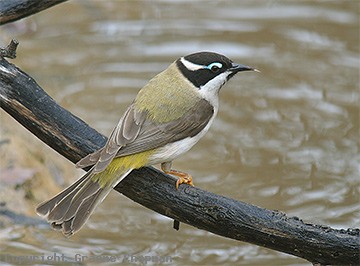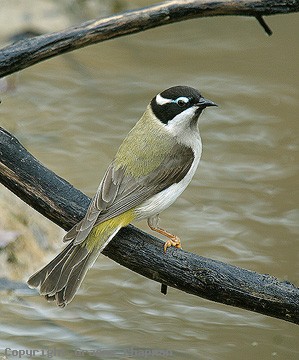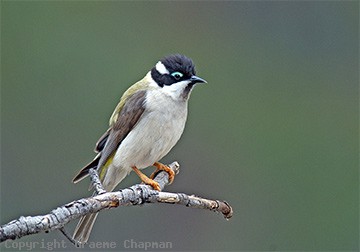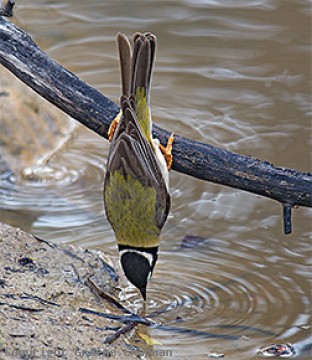Australian Birds
Black-chinned Honeyeater
Melithreptus gularis
(Viewing 4 of 6 photos)
|

Black-chinned Honeyeaters, in common with other members of the genus Melithreptus, are sociable birds that live in family groups, numbering sometimes up to a dozen, but more often five or six. Box/Ironbark forests of mid-western NSW and most of central Victoria are their stronghold but they do extend into central coastal Queensland and south-eastern South Australia. Black-chinned Honeyeaters spend a lot of time in the canopy, feeding amongst the blossom of eucalypts. There are very few detailed nest records because that's where they nest as well - high up in the canopy. They are a noisy species, easy to hear but not so easy to see. In mixed feeding flocks amongst blossoming eucalypts, they can be aggressive towards other species of honeyeaters, even larger ones. They are not known to migrate, but more than likely simply move locally in search of food, which is not always nectar - insects and lerps are also taken - they spend a lot of time amonst the leaves in the canopy. Along with the other Melithreptus honeyeaters, adults have distinctive orange coloured feet - how long this takes to develop nobody knows.
|

580201-D ... Black-chinned Honeyeater, adult. Note the orange feet. |

580202-D ... Black-chinned Honeyeater |
 |

580204-D ... Adult Black-chinned Honeyeaters have orange coloured feet. |

580205-D ... Black-chinned Honeyeater |
 |
Previous 1 2 Next
Return to Photo Library page









